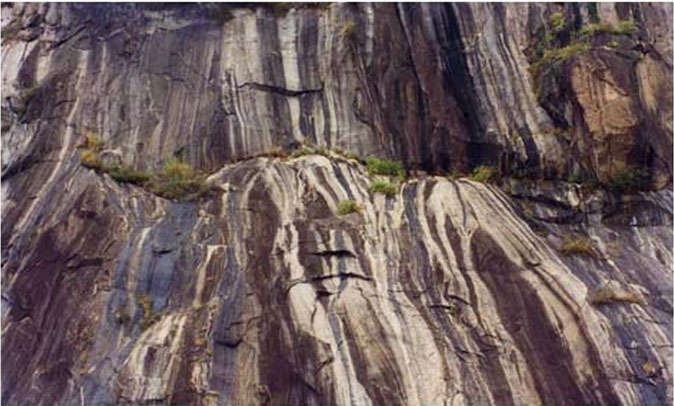Thiago Rocha Pitta at Andersen’s Contemporary, Berlin
by Travis Jeppesen on October 16, 2008
Notes on an Island Shipwreck is a simple project exploring the polar motifs of land and sea. Thiago Rocha Pitta is restrained in his approach, and the exhibition is well thought-out, though not extraordinary. The centerpiece, Project for a Stormy Weather Painting, is a large piece of canvas upon which water, soil, and pigment have forged the violet gray blackness of a storm at sea. It could also just be a dirty cloth hung in an elegant manner. Behind the piece, on either side two videos play, behind a wall. The first, Heritage, shows a boat with two trees planted in soil sailing across the ocean. The second, Inland Shipwreck, documents the burial of said boat, sans tree, in the earth. In a room upstairs, a single photograph captures a still from the former video; it looks as though trees are growing out of the water. It is somehow the most moving piece in the entire exhibition.
There is more, though. The office contains the boat itself, or a replica thereof, with soil and trees intact.
Then there are three unremarkable watercolor Sketches for sultriness, stills of the Inland Shipwreck, and Fossil Rain, a photo of huge rock formations withered with strange lines, presumably an after-effect of acid rain. All these things feel supplementary, if not excessive, to the work previous mentioned.
Thiago Rocha Pitta is said to have created this work out of homage to Joseph Conrad, the sailor and writer who was in many ways indebted to the Romantic tradition of the 18th and 19th centuries. Perhaps this is why you get such a quaint sensation looking at the artist’s project. With a slight nod to the environmental catastrophe that has reached global proportions, Pitta seems to be concerned with making sense of his subject matter, rather than heralding it. Perhaps the artist has in mind a more poignant idea – that nature has lost all the mysterious, wild attributes of the sublime that the Romanticists once hailed in this age of rigid pragmatism and scientific certainty. Whatever the case may be, you leave the gallery with the rather ambivalent impression that the artist’s engagement with both his materials and subject matter has been desultory at best.




Leave your comment